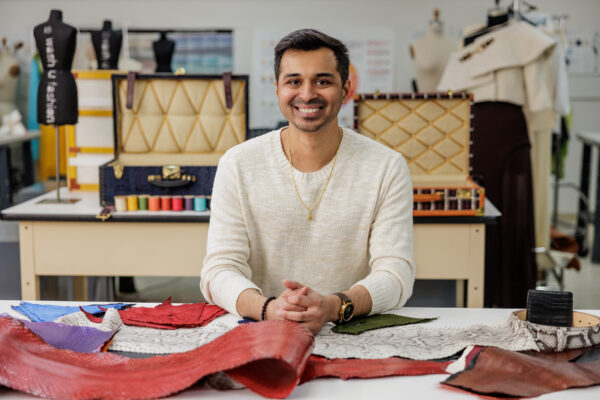At some point in their lifetimes, approximately one out of every eight women in the United States will be diagnosed with breast cancer. That estimate from the American Cancer Society becomes even more troubling when considering that the rate of breast cancer incidence continues to climb, rising around 1% every year from 2012-2021.
This increase is not distributed evenly among all of those diagnosed, according to Adetunji Toriola, MD, PhD, professor of surgery and co-leader of the Cancer Prevention and Control Program at Siteman Cancer Center, based at Barnes-Jewish Hospital and Washington University School of Medicine. Toriola’s lab recently analyzed 20 years of data and noted that more women are getting breast cancer in earlier phases of life. “We are finding that the incidence of breast cancer is rising in young women, aged 20 to 49, with even more marked increases within the last 10 years,” he says.
But why?
When looking into this increase, Toriola’s team found that a specific type of breast cancer was much more prevalent among younger women. Cases of estrogen receptor positive tumors, or cancers that are driven by an increase in estrogen, climbed markedly in the 20-49 age group. In the same period, incidence of tumors not driven by estrogen decreased.
Several factors can increase a person’s risk of developing this type of tumor. One important link is a person’s exposure to estrogen over a lifetime, Toriola says. And in recent decades, biological and reproductive trends have shifted in ways that can lead to more exposure.
Toriola’s team is currently looking at how changing reproductive patterns are driving the increase in estrogen receptor positive tumors in young women. Research has shown that girls are experiencing menarche, or getting their first periods, at earlier ages than in previous decades. Toriola is examining this trend in detail and considering how extra months or years of estrogen exposure relate to cancer risk.
“We know that a one-year reduction in age at menarche increases the risk of breast cancer by about 9-10%,” Toriola says.
The age of a person’s first pregnancy, as well as number of pregnancies, also play into the likelihood of developing estrogen receptor positive breast cancer. Having a child before age 30 and having more children overall are both known to lessen one’s risk of these tumors. But in the U.S., an increasing number of women are waiting until their 30s to have kids and having fewer total children.
“Over the last few years or decades, we’ve been seeing massive changes in these risk factors within the general population,” Toriola says. Taken together, the demographic changes may explain some of the increase in the number of younger people dealing with breast cancer.
“Breast cancer prevention does not have to wait until your 40s. There’s a need for us to start educating people more about what can we do early in life to start thinking of breast cancer and to start mitigating the risk.”
Adetunji Toriola
WashU researchers are studying these risks and more on several fronts. They’re examining environmental factors and chemicals that may be contributing to girls menstruating earlier. Toriola’s lab also looks at the biology of dense breast tissue, since across all ages those with dense breasts have higher incidence of breast cancer.
While women do not have much control over their estrogen exposure, certain behaviors can lower breast cancer risk. For example, alcohol intake can increase risk — yet another potential culprit in the increase of younger women experiencing the disease. “We’ve seen that there are differential patterns of alcohol consumption across generations. Younger women are more likely to binge drink now compared to previous decades,” Toriola says.
Other healthy habits, like eating plenty of vegetables and fiber, staying active and avoiding rapid weight gain, can all decrease risk. And these behaviors can start at any age.
“By the time women get to the screening age, at age 40, it’s crucial that they go through their screening and regularly talk to their physicians about what screening guidelines will work for them,” Toriola says. “But breast cancer prevention does not have to wait until your 40s. There’s a need for us to start educating people more about what can we do early in life to start thinking of breast cancer and to start mitigating the risk.”



